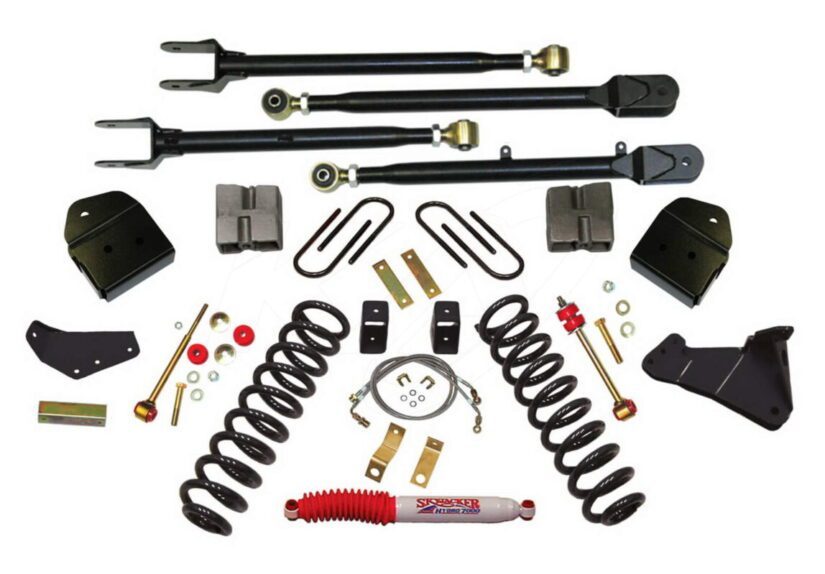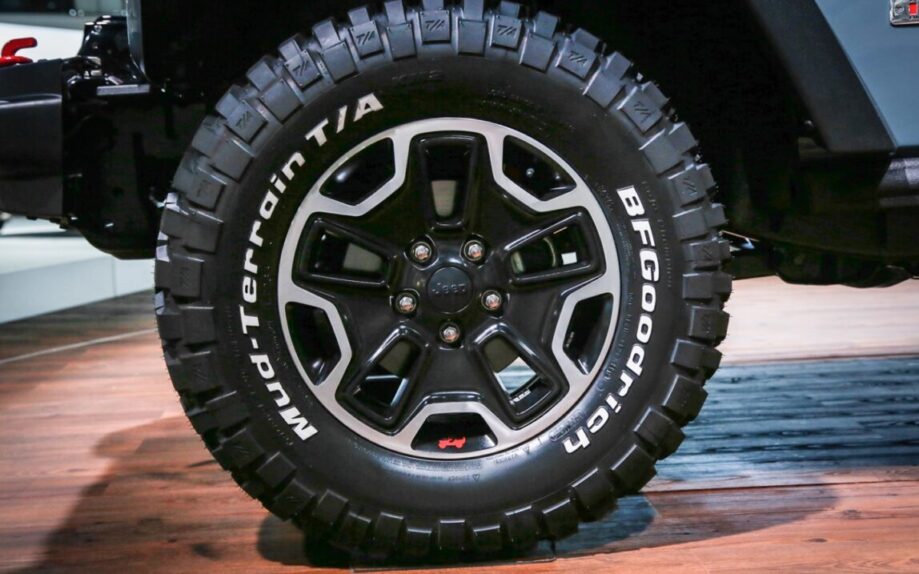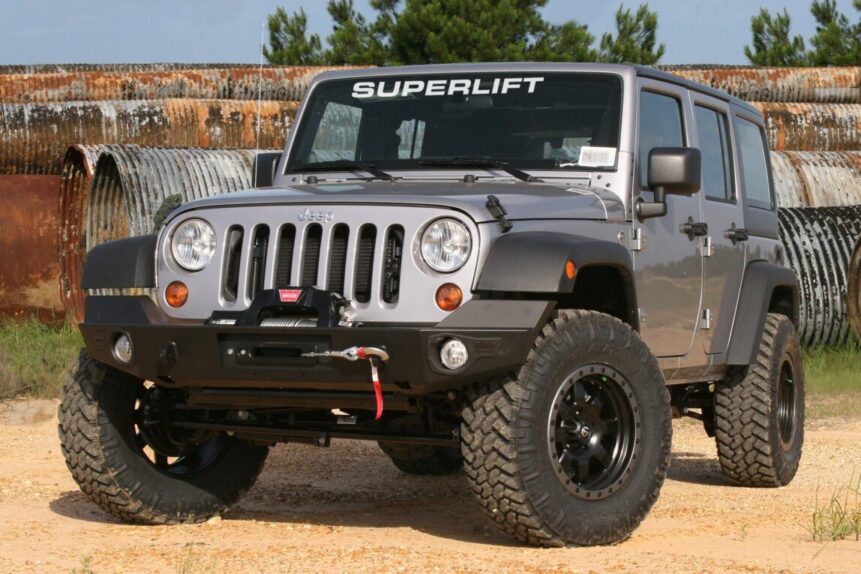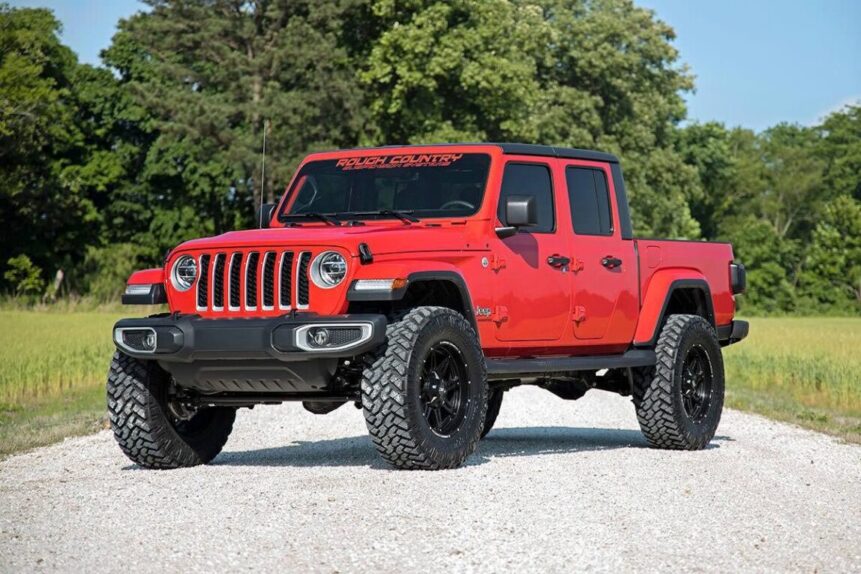Table Of Contents
- 1 Average Cost of Lift Kits
- 2 Importance of understanding the costs involved in lifting a Jeep
- 3 Types of Jeep Lift Kits
- 4 How Much Does It Cost To Lift A Jeep: Cost Factors
- 5 Additional Costs of Jeep Lifting
- 6 How Much Does It Cost To Lift A Jeep: DIY vs. Professional Installation
- 7 How Much Does It Cost To Lift A Jeep: FAQ
- 8 Brief explanation of what lifting a Jeep is and why people do it
- 9 Conclusion
Average Cost of Lift Kits
Overview of the average cost of each type of lift kit
The cost of lift kits can vary depending on the type of lift and the quality of the components used. Here is an overview of the average cost of each type of lift kit:
Body Lift Kit for Jeep
A body lift kit is the least expensive option for lifting a Jeep, with an average cost ranging from $200 to $600. These kits lift the body of the Jeep off of the frame, which allows for larger tires and better ground clearance. However, they do not improve suspension performance.
Suspension Lift Kit for Jeep
Suspension lift kits are more expensive than body lift kits, with an average cost ranging from $800 to $3,000. These kits lift the entire vehicle by replacing the stock suspension components with higher-quality components. They provide improved suspension performance, articulation, and ground clearance.
Coil Spring Spacer Lift Kit for Jeep
A coil spring spacer lift kit is a more affordable option for a suspension lift, with an average cost ranging from $200 to $800. These kits add spacers to the coil springs to provide a lift without having to replace the entire suspension system. However, they do not improve suspension performance and may lead to premature wear on the stock suspension components.
Comparison of the cost of different lift kits and their benefits
When considering the cost of different lift kits, it is important to weigh the benefits of each option. Body lift kits are the least expensive but do not improve suspension performance. Suspension lift kits are the most expensive but provide the best overall performance and ground clearance. Coil spring spacer lift kits are a more affordable option but may not be as durable as a full suspension lift.
Jeep owners, listen up! When selecting a lift kit, it’s crucial to take into account not only the cost, but also the intended use of your vehicle. You should also consider the size of the tires and wheels that you want, as well as the availability of replacement parts and service for your lift kit. By carefully assessing these factors, you’ll be better equipped to make a sound decision on which lift kit to choose.
Importance of understanding the costs involved in lifting a Jeep
Understanding the costs involved in lifting a Jeep is crucial before embarking on this modification. The cost of lifting a Jeep can vary greatly depending on various factors such as the type of lift kit used, the size of the lift, and whether you choose to install the lift kit yourself or pay for professional installation.
Lifting a Jeep can be a complicated and costly process, making it crucial to understand the financial implications involved. The expense of lifting a Jeep can vary depending on several factors, including the type of lift kit, installation fees, and any additional modifications required. It’s crucial to have a comprehensive understanding of these costs to ensure that you don’t exceed your budget or compromise your project. Taking the time to research and evaluate the expenses beforehand can help you make informed financial decisions and ensure that you have enough money to cover the lift without going overboard.
There’s no denying that lifting a Jeep can be a costly endeavor. But fear not, as having a clear understanding of the costs involved can go a long way in helping you make informed decisions. With a plethora of lift kit options available, it can be overwhelming to determine which one to choose. Understanding the cost of each type of lift kit can help you determine the best fit for your needs and budget. For instance, a suspension lift kit may provide better performance benefits than a body lift kit, but it also comes with a heftier price tag. By considering the costs and benefits of each type, you can make a well-informed decision.
Lastly, understanding the costs involved in lifting a Jeep can help you plan for any additional expenses that may arise. For example, lifting a Jeep often requires the installation of larger tires and wheels, which can be an additional cost. By understanding these additional costs, you can budget accordingly and ensure that you have all the necessary components to complete the lift.
In conclusion, understanding the costs involved in lifting a Jeep is essential before embarking on this modification. It can help you stay within your budget, make informed decisions about which lift kit to choose, and plan for any additional expenses that may arise.
Types of Jeep Lift Kits
Explanation of different types of lift kits available (body lifts, suspension lifts, etc.)
There are several different types of lift kits available for Jeeps, each with its own unique benefits and drawbacks.
Body Lifts for Jeep
A body lift kit raises the body of the Jeep higher on the frame without altering the suspension. This type of lift kit is typically the most affordable option, but it does not provide additional clearance for larger tires or improve off-road performance.
Suspension Lifts for Jeep
Suspension lift kits raise the entire Jeep, including the frame and suspension, providing additional clearance for larger tires and improved off-road performance. There are two main types of suspension lifts:

Coil Spring Lift Kits for Jeep
This type of lift kit replaces the coil springs with longer ones to provide additional clearance.
Leaf Spring Lift Kits for Jeep
This type of lift kit replaces the leaf springs with longer ones to provide additional clearance.
Spacer Lifts
Spacer lift kits involve adding spacers to the top or bottom of the existing springs or shocks to provide additional clearance. While this type of lift kit is typically less expensive than a full suspension lift, it may not provide the same level of performance and may not be suitable for heavy off-road use.
Pros and cons of each type of lift kit
Body Lifts
Pros:
Most affordable lift kit option
Can improve the appearance of the Jeep
Cons:
Does not provide additional clearance for larger tires
Does not improve off-road performance
Suspension Lifts
Pros:
Provides additional clearance for larger tires and improved off-road performance
Can be customized for specific off-road needs
Cons:
More expensive than body lifts
Can affect ride quality and handling if not installed correctly
May require additional components to maintain proper alignment and steering
Spacer Lifts
Pros:
Less expensive than full suspension lifts
Provides additional clearance for larger tires
Cons:
May not provide the same level of performance as a full suspension lift
May not be suitable for heavy off-road use
May require additional components to maintain proper alignment and steering
The choice of lift kit for a Jeep Wrangler is a complex decision that involves several factors. The owner’s budget, intended use, and personal preferences are some of the key considerations that must be taken into account. Different lift kits have varying prices, performance benefits, and installation requirements. Therefore, it’s crucial to conduct thorough research and seek expert advice before making a final decision. This will help to ensure that the lift kit is a suitable fit for the Jeep Wrangler and meets the owner’s desired level of performance.
How Much Does It Cost To Lift A Jeep: Cost Factors
Breakdown of the costs involved in lifting a Jeep, including the lift kit, installation, and additional components
The cost of lifting a Jeep can vary greatly depending on several factors. The main cost factors include:
Lift Kit for Jeep
The cost of the lift kit itself is one of the biggest expenses in lifting a Jeep. The price of a lift kit can range from a few hundred dollars for a body lift to several thousand dollars for a high-quality suspension lift.
Installation
The cost of hoisting a Jeep is heavily dependent on whether the owner chooses to go with a professional installer or take on the challenge as a DIY project. Opting for a pro installation can range from a few Benjamin Franklins to multiple stacks, depending on the complexity of the setup.
Additional Components for Jeep
Depending on the type of lift kit, additional components may be necessary to maintain proper alignment and steering. These can include new shocks, control arms, track bars, and more.
Tires and Wheels of Jeep
Aspire for bigger tires and wheels? Expect the expenses to shoot up! New tires and wheels for your lifted Jeep can add up to a considerable chunk of the overall budget, ranging from a few hundred to several thousand dollars depending on the size, brand, and type of tires and wheels chosen. So, before diving into the upgrade, it’s essential to research and compare options to ensure that the chosen tires and wheels fit your budget and provide the desired level of performance.

Explanation of how each factor affects the overall cost
Lift Kit for Jeep
The cost of the lift kit itself will be one of the biggest factors in the overall cost of lifting a Jeep. The type of lift kit chosen will determine the price, with body lifts being the least expensive and suspension lifts being the most expensive.
Installation
The cost of installation will vary depending on whether the lift kit is installed professionally or done as a DIY project. Professional installation can be more expensive, but it will ensure that the lift kit is installed correctly and safely.
Additional Components for Jeep
Depending on the type of lift kit, additional components may be necessary to maintain proper alignment and steering. These components can add several hundred to several thousand dollars to the overall cost of lifting a Jeep.
Tires and Wheels of Jeep
When considering a lift kit for a Jeep, one should also factor in the cost of upgrading to larger tires and wheels. This can significantly add to the total cost of the project. The price of new tires and wheels can vary greatly, depending on factors such as brand, size, and quality. Some cheaper options may cost only a few hundred dollars, while high-end tires and wheels can easily cost several thousand dollars. It’s important to consider both the financial and performance benefits of different tire and wheel options before making a decision.
When planning a Jeep lift, it is crucial to keep in mind all the expenses that might come with it. Researching the cost of different lift kits, installation charges, and the price of new tires and wheels can help you avoid overspending and make informed decisions about your project. Consulting with a professional can also be helpful, as they can provide valuable insights and recommendations based on your budget and intended use. By carefully considering all the cost factors, Jeep owners can create a customized and high-performing vehicle that fits their unique needs.
User review about Cost To Lift A Jeep
“I’m in the same boat as you. Stock JLU sport and want to lift it as well. Called a few dealers and was able to get the Mopar lift for $1250 and they will charge another $550 for installation. This is the cheapest I’ve found the Mopar lift. if you look on the Jeep website/app I found a 15% off coupons for parts. That’s how I got it down to that price.”
Additional Costs of Jeep Lifting
Explanation of additional costs that may be necessary, such as new tires, wheels, and alignment
In addition to the cost of the lift kit and installation, there are additional costs that may be necessary when lifting a Jeep. These costs include:
New Tires for Jeep
Lifting a Jeep often requires larger tires to accommodate the increased ground clearance. The cost of new tires can range from $500 to $2,000 depending on the size and quality.
New Wheels for Jeep
As an extra expense, larger wheels are also necessary to achieve the intended style and performance. The price tag for new wheels can fluctuate from $500 to $2,000 based on the size and quality of the chosen product.
Alignment for Jeep
Lifting a Jeep can affect the alignment of the wheels and suspension, which can cause uneven tire wear and handling issues. The cost of a wheel alignment can range from $100 to $200.
How these costs can add up and affect the overall cost of lifting a Jeep
These additional costs can add up quickly and significantly increase the overall cost of lifting a Jeep. For example, a suspension lift kit can cost $800 to $3,000, but the cost of new tires, wheels, and alignment can add an additional $1,000 to $4,000 to the total cost.
It is important to budget for these additional costs when planning to lift a Jeep to avoid any surprises and ensure that the Jeep is properly equipped and safe to drive. Additionally, it is essential to choose the right lift kit and components to ensure that the Jeep performs as desired and can handle any modifications.
How Much Does It Cost To Lift A Jeep: DIY vs. Professional Installation
Pros and cons of DIY installation versus professional installation
Installing a lift kit on a Jeep is no easy task, and there are advantages and disadvantages to both DIY and professional installation methods. Let’s dive into some of the pros and cons of each option:
DIY Installation
Pros:
Lower Cost: DIY installation can save money on labor costs, which can be significant when paying for professional installation.
Satisfaction of Doing It Yourself: Some Jeep owners enjoy working on their vehicles and take pride in completing the installation themselves.
Ability to Customize: DIY installation allows for more customization, as Jeep owners can choose specific components and make modifications as desired.
Cons:
Time-consuming: DIY installation can take a significant amount of time and may require additional tools or equipment.
Risk of Damage: Improper installation can lead to damage to the Jeep or components, which can be costly to repair.
Lack of Experience: DIY installation requires knowledge and experience with mechanics and vehicle modifications, which some Jeep owners may not have.
Professional Installation
Pros:
Professional Expertise: Professional installation ensures that the lift kit is installed correctly by experienced mechanics.
Time-saving: Professional installation can save time and effort, as the work can be completed quickly and efficiently.
Warranty Protection: Many professional installers offer warranties on their work, which can provide peace of mind and protection against defects or installation errors.
Cons:
Higher Cost: Professional installation can be significantly more expensive than DIY installation due to labor costs.
Limited Customization: Professional installation may limit customization options, as the installer may have specific components they prefer to use.
Dependency on Others: Professional installation requires relying on others to complete the work, which can be inconvenient or require scheduling conflicts.
Factors to consider when deciding whether to install the lift kit yourself or pay for professional installation
When deciding whether to install a lift kit yourself or pay for professional installation, several factors should be considered:
Time and Availability
DIY installation can be time-consuming and may require additional tools or equipment. If time is limited or the necessary tools are not available, professional installation may be a better option.
Budget
Professional installation can be significantly more expensive than DIY installation. If budget is a concern, DIY installation may be the better option.
Experience
DIY installation requires knowledge and experience with mechanics and vehicle modifications. If the Jeep owner lacks experience or is uncomfortable with the installation process, professional installation may be the better option.

Desired Customization
DIY installation allows for more customization options, while professional installation may be limited by the installer’s preferred components.
Warranty Protection
Professional installers often offer warranties on their work, which can provide protection against defects or installation errors.
By considering these factors, Jeep owners can make an informed decision about whether to install the lift kit themselves or pay for professional installation.
How Much Does It Cost To Lift A Jeep: FAQ
Q: Can I lift my Jeep without buying a lift kit?
A: While it is possible to lift a Jeep without a lift kit, it is not recommended. Using blocks or other makeshift methods can compromise the safety and stability of the vehicle.
Q: Do I need to buy new tires and wheels when lifting my Jeep?
A: It is recommended to replace your tires and wheels when lifting a Jeep to ensure proper fit and alignment. However, it is not always necessary, and some lift kits can accommodate the existing tires and wheels.
Q: How long does it take to install a lift kit?
A: With regards to installing a lift kit on a Jeep, the amount of time required can be a real mixed bag. The installation time can fluctuate based on multiple factors, such as the type of lift kit used and the level of experience of the installer. It’s not uncommon for the installation process to take anywhere from just a few hours to an entire day or longer. So, it’s vital to plan accordingly and make sure you have enough time set aside to complete the installation properly.
Q: Can I install a lift kit myself?
A: Yes, it is possible to install a lift kit yourself. However, it requires knowledge and experience with mechanics and vehicle modifications. Improper installation can compromise the safety and reliability of the Jeep.
Q: Are there any other costs involved in lifting a Jeep?
A: In addition to the cost of the lift kit and installation, there may be additional costs such as new shocks, brake lines, and steering components. These costs can add up and should be factored into the overall cost of lifting a Jeep.
Brief explanation of what lifting a Jeep is and why people do it
Lifting a Jeep refers to the process of increasing the height of a Jeep’s body or suspension using specialized kits or components. This is done to improve the vehicle’s off-road performance by providing better ground clearance and allowing for larger tires to be installed.
Off-road enthusiasts and Jeep owners often lift their vehicles to improve their overall off-road capabilities. Lifting a Jeep can provide better clearance over rocks, logs, and other obstacles that are common in off-road environments. It also allows the Jeep to tackle steeper inclines and declines without bottoming out or scraping the undercarriage.
In addition to improved performance, lifting a Jeep can also enhance its appearance. A lifted Jeep has a more rugged and aggressive look that many Jeep owners find appealing. It’s not uncommon for Jeep owners to lift their vehicles for this reason alone.
Overall, lifting a Jeep is a popular modification among off-road enthusiasts and Jeep owners who want to enhance their vehicle’s performance and appearance.
Conclusion
Recap of the costs involved in lifting a Jeep
Lifting a Jeep can be a real hoot and a holler, giving owners the chance to spiff up their ride and enhance its off-road abilities. But before diving in, it’s crucial to understand the ins and outs of the financial burden. The costs of lifting a Jeep can range from the price of the lift kit itself, to the cost of installation, to add-ons like fresh wheels, rubber, and an alignment.
Importance of doing proper research and understanding the costs before making a decision
Lifting your ride can be a total blast and a gnarly way to soup up your off-roading game. But, it’s crucial to take a step back and peep the price tags involved. Getting a lift kit installed can come with a lot of costs, such as the kit itself, installation fees, and extra parts like tires, wheels, and alignment. So, before you hit the gas and dive into this mod, make sure to do some solid research. Check out the different types of lift kits available, weigh the pros and cons of each, and figure out which one will mesh with your Jeep and your wallet. Don’t forget to keep an eye on additional expenses, too, as they can stack up like crazy.
How Much Does It Cost To Lift A Jeep: Final thoughts and recommendations
Lifting a Jeep can be a fun and rewarding experience, but it’s important to understand the costs involved and make an informed decision. DIY installation can save money on labor costs, but it requires knowledge and experience with mechanics and vehicle modifications. Professional installation can provide peace of mind and warranty protection, but it can be significantly more expensive. Regardless of which installation option is chosen, it’s important to use high-quality components and follow proper installation procedures to ensure the safety and reliability of the Jeep.
Lifting a Jeep is a super cool way to make the vehicle stand out and improve its off-road performance. However, it’s crucial to research the costs involved before getting started. By understanding the expenses of the lift kit, installation, and additional components like tires and wheels, Jeep owners can make an informed decision that fits their budget. With the right lift kit and upgrades, owners can customize their Jeep to fit their personal style and have fun off-roading adventures for years to come.


